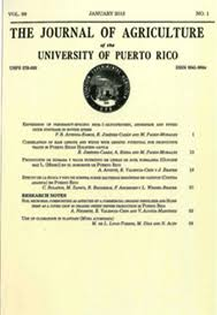Resumen
El abandono agrícola ha favorecido el crecimiento de especies de árboles introducidos e invasores en Puerto Rico. Estos bosques noveles son frecuentes en paisajes agrícolas a través del mundo, pero poco se conoce acerca de los determinantes y consecuencias de su expansión. Este estudio describe la distribución geográfica y los atributos espaciales de bosques noveles dominados por el tulipán africano, Spathodea campanuata Beauv., en la región norte-central de Puerto Rico. Utilicé fotos aéreas del 1998 para cartografiar bosques de Spathodea, los cuales aparecen rojos en flor, y determiné su distribución a través de substratos geológicos, tipos de suelo e historias de uso, y el área y razón de perímetro a área (P/A) de cada bosque. Los 443 bosques de Spathodea cartografiados representaron un 0.7% de la región y fluctuaron de 0.03 a 9.1 ha (media=0.5, S.E.=0.03) en área y de 0.03 a 0.3 m/m2 (media=0.09, S.E.=0.0002) en P/A. Los bosques de Spathodea resultaron más comunes en terrenos previamente usados para caña de azúcar, los cuales típicamente se encuentran en substratos aluviales fértiles. La mitad de los bosques de Spathodea poseen una edad mayor a los 30 años y aquellos en fincas abandonadas de café al sol en substrato volcánico extrusivo mostraron mayor área y menor P/A. Estos resultados muestran que los bosques noveles de Spathodea rehabilitan terrenos agrícolas abandonados, aumentan la conectividad espacial del paisaje y proveen lugares idóneos para producción agroforestal o restauración de especies, representando un activo para la resiliencia social-ecológica al cambio climático y para el desarrollo socio-económico puertorriqueño.

